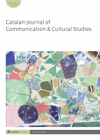
Full text loading...

This commentary assesses what impact the generational divergence of audience preferences alongside the platform convergence of content creators will have for minority language media outlets and researchers working in this subdiscipline. An overview of the history of minority language media studies depicts this in two waves – first with ‘traditional’ media forms, followed by a second wave with the emergence of social media as a mass form of speakers’ consumption and participation habits. The commentary then outlines the stark generational divergence of social media consumption which has bought TikTok and Instagram to the fore at the expense of Facebook and Twitter, followed by demonstrating institutional actors’ adoption of creating short-form audio-visual content directly for such emerging channels. The conclusions suggest a third wave of minority language media literature will face different challenges as a result, potentially leading to a possible switch towards qualitative over quantitative methods due to less publicly accessible data.

Article metrics loading...

Full text loading...
References


Data & Media loading...

Publication Date:
https://doi.org/10.1386/cjcs_00100_1 Published content will be available immediately after check-out or when it is released in case of a pre-order. Please make sure to be logged in to see all available purchase options.